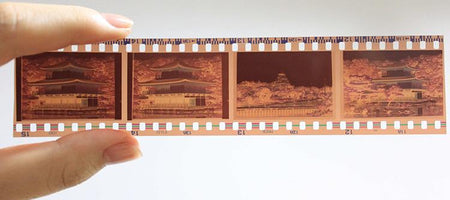Long before Spotify came around and made music all about streaming, there were CDs. Long before the crystal clear audio and digital features of CDs, there were cassette tapes. Long before cassette tapes, there were these weird things called 8-track tapes. And Before 8-tracks, there were reel-to-reel audio recordings.
We’re basically talking about the ice age here.
Reel to reel recordings were essentially the first audio format on magnetic tapes. They get their name from the way that you played them--you guessed it, from reel to reel. Tape played from one real to another with nothing else in between. Because they were so unwieldy, reel to reel tapes were mostly used in professional audio recording.
Reel to reel magnetic tapes were invented way back in the 1930s. That’s almost unbelievable! Invented and perfected by the Germans, this format was one of the earliest forms of magnetic audio recording. Technically, reel to reel tapes aren’t one single format, but a family of formats. It includes the Blattnerphone--the most German sounding format I’ve ever heard of--the magnetophon, and ZK-147.
I’m sure you’ve heard of those.
All of the devices worked in pretty much the same way. You had a reel of tape, you fed one end of the tape into a machine, and it would run through the playback device. The other end of the machine had a spool, and you’d play the whole tape from one end to the other. Reel to reel. Genius!
Reel to reel technology was a novel development. Prior to the magnetic tape, sound recordings were slapped on records or drums--think vinyl LPs or those crazy rotating cylinders on self-playing pianos. Reel to reel tapes changed the game.
Recording times got much longer. Instead of being limited by the capacity of a 12” record, you could record onto a long tape. And if you needed to record longer, you just needed a longer tape. The flexibility was amazing! It’s worth noting that reel to reel recorders weren’t really intended for home use.
Reel to reel audio recording was the standard for years too. Even up until the 1980s, reel to reel was what you would see in most recording studios. Some of the most incredible songs in history were recording on reel to reel tapes. Heck, some bands these days still prefer to record on reel to reel. Jack White loves it. So do the Black Keys. There’s something nostalgic about using reels, because the sound changes and gives the music a dirtier sound.
But for the most part, reel to reel tape has gone the way of VHS and Betamax. Digital recording is more economical, and it results in less loss of audio fidelity. Mixing and mastering is much simpler when you’re not cutting and splicing celluloid. Plus you don’t have to buy miles of tape to record a single song.
The environment also appreciates the more eco-conscious aspect of digital recording.
Reel to reel tapes changed the game for audio recording. Even though it didn’t make its way into most people’s homes, it did take music and audio production to a new level. Some hipsters still use reel to reel recording to get a vintage sound, but it’s not really mainstream anymore.













